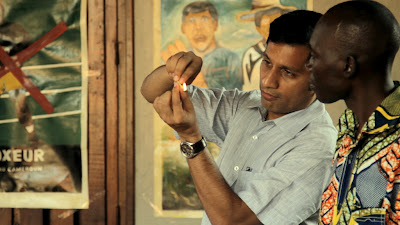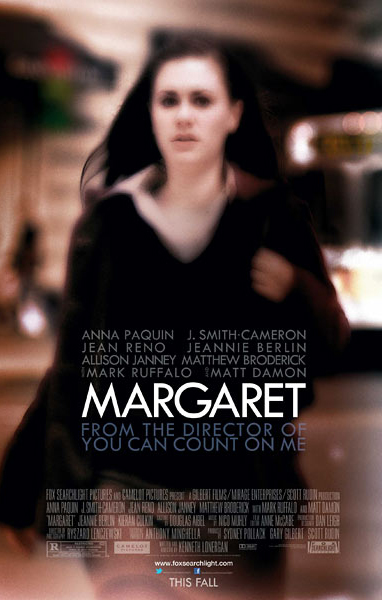To watch Shirley Clarke's ORNETTE: Made in America today, some 27 years after its debut at the 1985 TIFF, is to realize just how experimental a filmmaker Clarke really was. Much of what we see on screen is what many new documentaries are now doing -- over a quarter of a century later. Using no narration as such (the press material tells us that the filmmaker used Coleman's symphony Skies of America as her underlying script, but this does not really compute: narrative can be verbal, even visual, but symphonic is a bit of a stretch), Clarke simply drops us into things and we begin to learn about this musician, his life and his music -- on the fly, as it were.
I wish we could have heard, really heard, more of Ornette's music here. Even though we're given quite a bit of it during the film, Clark's visuals, in several scenes, at least -- insistent, preening, all over the place -- prevent us from concentrating on the music in any serious way. The filmmaker was probably trying to find a visual equivalent to Coleman's work, but if anything some of these visuals obfuscate more than they render clear.
As for Coleman himself, you certainly don't come away from the movie saying, "Whoa -- now I really know this guy (or his music)!" But rather, "What a strange and interesting fellow he seems to be, what a life he probably led, and how I'd like to hear more of his music." In its way, it's kind of an appropriate, if weird, introduction to the musician because it allows you to experience how very strange he and his music are. (Other jazz musicians are said to have simply walked off the stage whenever Coleman would appear on it.) Simply listening to the fellow's little riff on castration/circumcision and man/male will probably rattle your brain bizarrely for some time to come.
Clarke concentrates on the movie's singular "event": a performance of Coleman's symphony to open the new cultural center in Fort Worth (the musician's home town), Caravan of Dreams. Clarke uses the orchestral part of the score more heavily, I think, that she does the Jazz Band's contribution, and she uses this as underscoring for the tale she tells. (The orchestra and the band, at least as shown here, though sharing the same stage seem oddly un-integrated both in terms of the music we hear and what we see: the band is black, the orchestra white.) All this makes for interesting, non-linear storytelling that, back when the film was first released, might have proven a little difficult for audiences to follow. Today, after all the changes we've seen to the documentary form, her film looks surpri-singly contemporary but perhaps now not so hard to keep up with.
Some of the famous people who enter the film and Coleman's life include William Burroughs (above, center), Buckminster Fuller, and George Russell, a composer and professor at the New England Conservatory of Music. The last has this to say a propos Coleman's work: "The West has always thought of music as entertainment. It doesn't understand how it also can contribute ideas & philosophy."
What proves most difficult about the movie are some of Clarke's would-be snazzy visuals and editing techniques (occurring particularly heavily in the Buckminster Fuller section). These are jumpy, repetitive and tiresome and do nothing for one's enjoyment or understanding. They don't even properly reflect Coleman's music, syncopated as it is. They simply call attention to themselves, so we wait until the filmmaker has gotten this out of her system. Fortunately, it doesn't take too long.
What the movie might do is send viewers out to look for and listen to this musician's work. Unlike most of the Clarke oeuvre, this documentary is also more modern in that it lasts only 78 minutes, just about a half-hour shorter than much of her full-length work. Given the style in which she has chosen to present the film, this shorter running time seems appropriate. Ornette: Made in America opens tomorrow, Friday August 31, here in New York City at the IFC Center.
















































